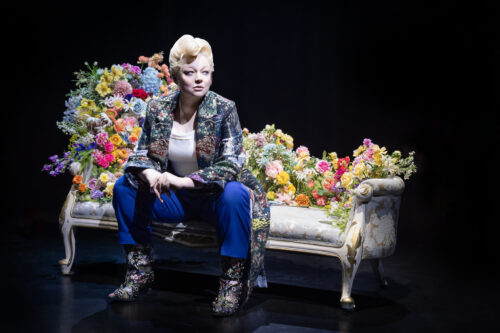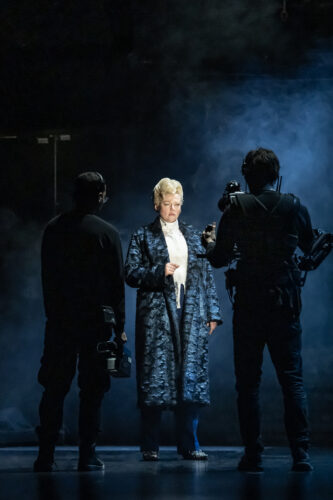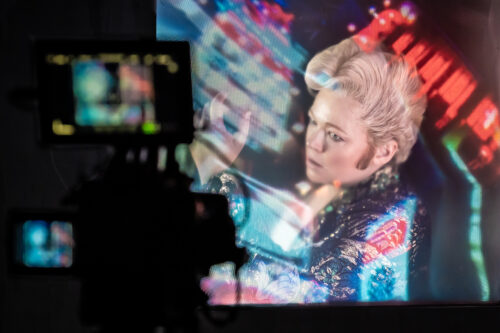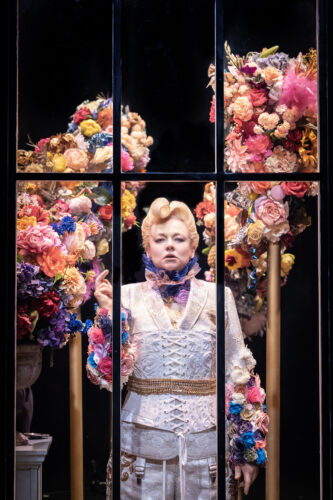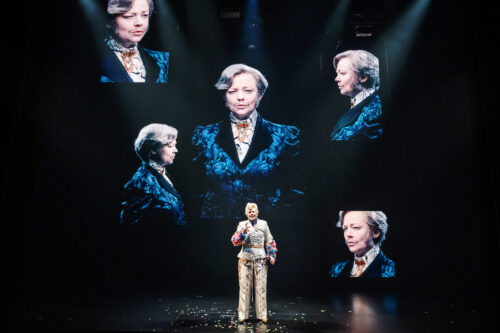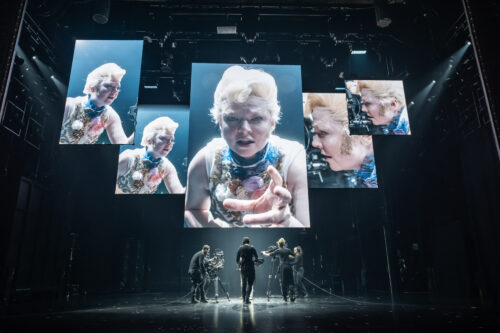THE PICTURE OF ASTOUNDING THEATRE
I’ve been fortunate to witness some extraordinary one-person plays on Broadway. To name a few: Zoe Caldwell in Lillian, Ben Kingsley in Edmund Kean, Robert Morse in TRU, as well as Elaine Stritch at Liberty, I Am My Own Wife, and outstanding performances by John Leguizamo, Eric Bogosian, and Anna Deavere Smith. However, the pinnacle for me has always been Jane Wagner’s The Search for Signs of Intelligent Life in the Universe starring Lily Tomlin, alongside Robert Lepage’s Elsinore. That is, until now.
A new production has taken the top spot in my personal rankings, and it opened on Broadway at The Music Box Theatre tonight, March 27. Without a doubt, The Picture of Dorian Gray, starring Sarah Snook, is the most powerful and compelling one-person play I have ever experienced in my decades of theatergoing.
Based on Oscar Wilde’s novel, this adaptation—written and directed by the visionary Kip Williams—is an unmissable theatrical event, scheduled to close on June 15th. I cannot stress this enough: secure your tickets immediately before this limited run sells out. And let me preface my next statement by saying that I rarely use the word “brilliant.” It’s a term I reserve for the likes of Leonard Bernstein, Stephen Sondheim, Shakespeare, da Vinci, and Mozart. But in a word, The Picture of Dorian Gray is brilliant.
The story follows the young and strikingly handsome Dorian Gray, who, upon seeing his newly painted portrait, wishes to remain forever youthful while the painting ages in his place. As fate—or something darker—would have it, his wish comes true. Over the next 20 years, while Dorian retains his youthful beauty, he descends into a life of excess, moral corruption, and debauchery, while his hidden portrait grotesquely reflects his deteriorating soul. Without revealing the ending, suffice it to say it is anything but happy. Devastating, in fact. And yet, despite the tragedy, audiences will leave the theater exhilarated, having witnessed two uninterrupted hours of sheer genius in design, staging, and performance.
On a nearly bare stage with a massive screen suspended at its center, Sarah Snook embodies an entire world of characters—27 in all. The use of two handheld cameras—reminiscent to the current Sunset Boulevard revival—projects her image onto the screen, clearly transforming her into different personas. Props are handed to her from offstage: a cigarette and a paintbrush. With each subtle shift in posture, voice, and mannerisms, she fluidly transitions between characters, ensuring the narrative never falters. At times, the camera’s perspective even becomes that of a character itself—smoke blown into the lens signifies the previous character smoking a cigarette. It’s pure theatrical storytelling: simple, true, and utterly mesmerizing.
As the performance progresses, Marg Horwell’s scenic design introduces additional characters on high-definition LED screens, which, in combination with period costumes and wigs (also by Horwell), create a stunning visual tapestry. David Bergman’s video design blends live performance with pre-recorded elements, culminating in intricately choreographed scenes—most notably a dinner sequence featuring seven distinct characters around the table. The set boundlessly evolves, expanding from simple props and set pieces, to an entire room, and even a forest of trees—each transition executed with seamless precision.
Technically, the production is a mazelike feat. Three cameras on rolling tripods join the two handheld operators, while a seven-person crew—dressed in black—dart across the stage, setting props, moving scenery, and assisting Snook with rapid costume and wig changes. They even track her movements offstage, down stairwells, and through the basement crossover beneath the stage. The scale of such technical choreography is impressive and exhausting. The fact that they repeat it flawlessly on two-show days seems astonishing.
Clemence Williams’ sound design features a lush, cinematic score that underscores the production’s suspenseful energy. Nick Schlieper’s lighting design is equally masterful, navigating the complexities of moving LED screens and shifting environments. Meanwhile, production stage manager Lisa Iacucci shoulders the Herculean task of calling countless cues—particularly the intricate synchronization of live and pre-recorded elements—to ensure a smooth, continuous interplay.
That Kip Williams both adapted and directed this production is no surprise; his singular vision orchestrates the intricate interplay of staging, technology, and performance with stunning cohesion. This production is a landmark achievement—one that will likely remain my number one for years to come. It is, quite simply, theatrical perfection, and an experience I will remember for the rest of my life.
photos by Marc Brenner
The Picture of Dorian Gray
Music Box Theatre, 239 W 45th St
ends on June 15, 2025
for tickets, visit Dorian Gray

